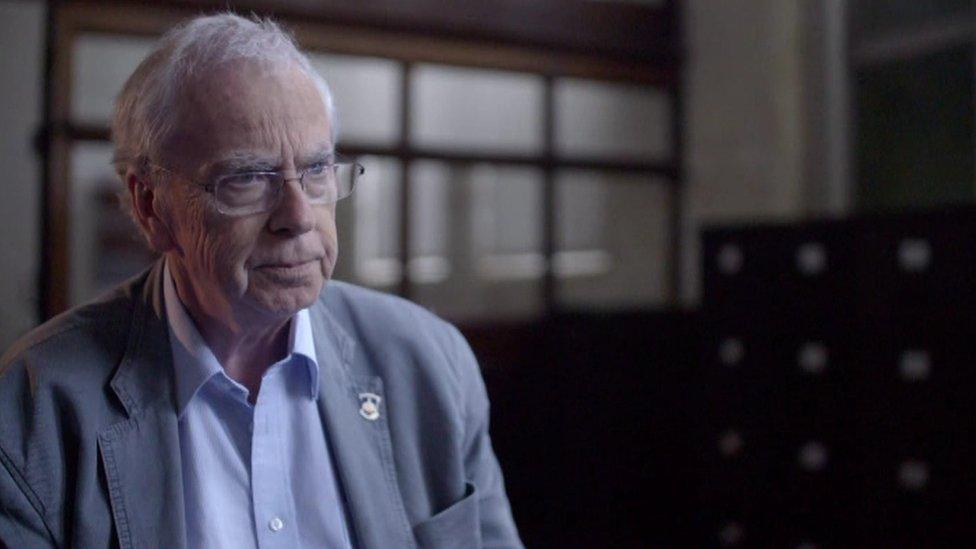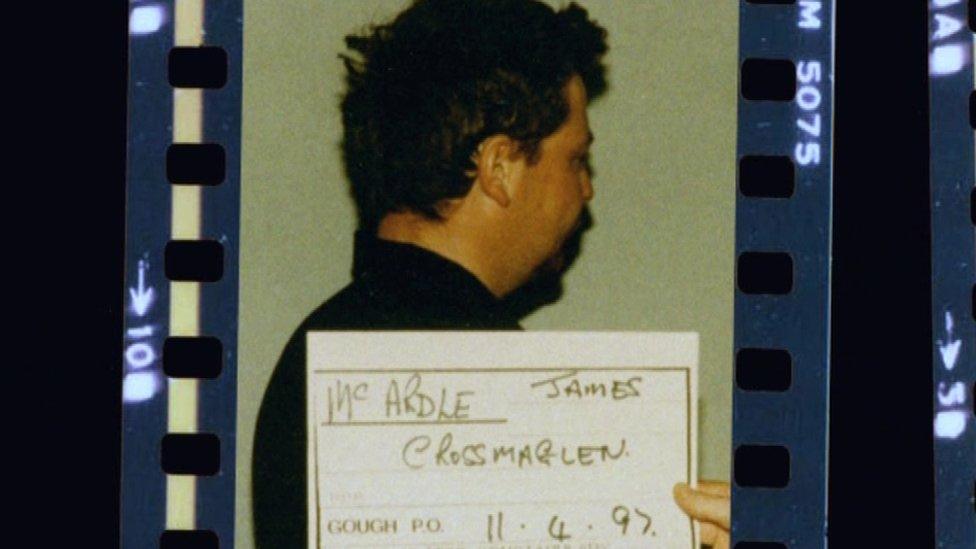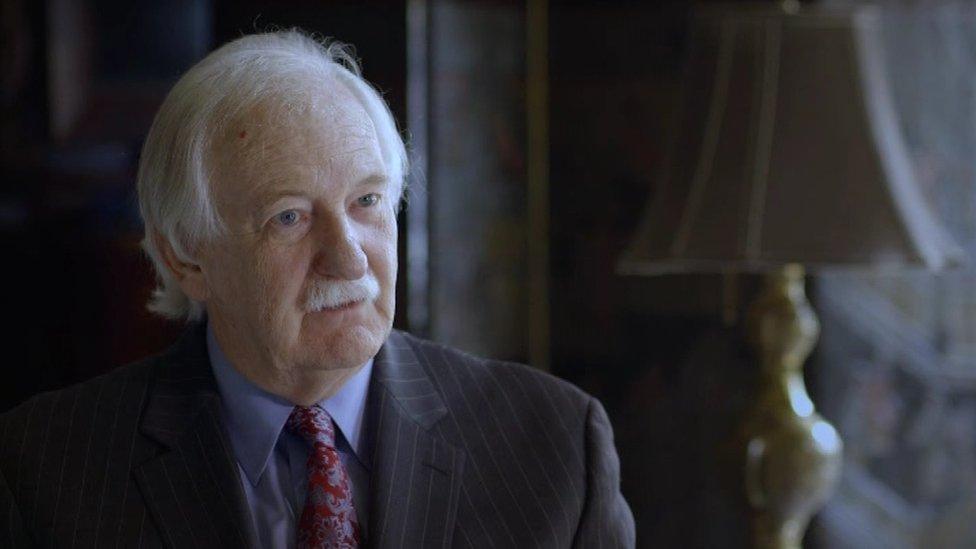Docklands bomb: Senior officer details hunt to catch those responsible
- Published

John Grieve headed the Metropolitan Police's anti-terrorist unit, and has spoken about the operation for the first time in a BBC Northern Ireland programme that will be aired on Monday
Next week marks the 20th anniversary of the Canary Wharf bomb.
The explosion in the heart of London's Docklands, external marked the end of a 17-month ceasefire in IRA operations.
Now, the man charged with catching those responsible has explained how the manhunt happened.
John Grieve headed the Metropolitan Police's anti-terrorist unit, and has spoken about the operation for the first time in a BBC Northern Ireland programme that will be aired on Monday.
Describing the moment he knew something had happened, Commander Grieve said: "You saw this whoosh of light, like a long, flat flash across the horizon.
"You could see looking right across London it was a big bomb that had gone off."
That "whoosh of light" was a 500kg bomb.
It had been loaded on to a lorry in south Armagh, taken across the Irish Sea, driven down the length of England, and parked under the train tracks in Britain's new financial district.

Hundreds of people were injured by flying glass in the aftermath of the explosion
When Commander Grieve got to the scene, his worst fears were confirmed.
"Hundreds of people injured by flying glass, a scene of utter devastation... like anything you've ever seen in a movie. And that sort of flickering light from the fire brigade and torches... Like a scene from the apocalypse."
Two people were killed in the explosion, and many more were injured, some permanently.
It was the responsibility of the Metropolitan Police Anti-Terrorist unit to try and catch the individuals responsible.
After appealing on television for information, Commander Grieve soon got his first lead.
"A call comes in from someone who clearly knows what he's talking about who says 'I'm telling you that truck was here at River Road Barking, on this piece of waste ground'.
"Exhibits officers go out there, talk to him, look at what they've got, and instantly recognise that they've got something very useful."
What was discovered was a truckers magazine inside a tyre.
"It was probably taken out of the vehicle to be burnt so it would disappear. I think they were spooked at that point," he said.
The magazine had a clear fingerprint on which became the first crucial piece of evidence.
The second print came after following motorway cameras back up to a Carlisle truck-stop.

James McCardle of Crossmaglen was charged in connection with the bombing
"It's lucky that the cleaner hadn't polished the ash-tray because there is his thumbprint on that," he said.
The third piece of evidence with that same thumbprint on was the Stenaline ticket from the Stranraer ferry.
But there was no one matching the print already on the police system.
The breakthrough came during a joint Scotland Yard and RUC operation on snipers in south Armagh.
Commander Grieve said: "I got a phone call saying we've arrested the sniper team, and I said congratulations that's wonderful.
"He said we've got the car, we've got the rifle, we've got them all alive which was really good, and he said the fingerprint officers had a look at the first set of fingerprints they've taken from the people we've arrested... and he just took one look at it and he said this is the triple thumbprint man."
James McCardle of Crossmaglen was charged. The RUC's senior investigating officer was Det Insp Alan Mains.

Former Congressman Bruce Morris sees the Canary Wharf bomb as a triumph for the IRA
He said: "Not only was he caught for being in the car with the rifle, but also he was the suspect in the Canary Wharf bomb. And that was, in the policing world, just like winning the lottery."
The arrests were seen as the perfect example of a co-ordinated anti-terrorism operation, but others, like former Congressman Bruce Morris see the Canary Wharf bomb as a triumph for the IRA.
He said: "The great irony for me is that Canary Wharf got the republicans to the table. The actions of the British are really 'yes you can bomb your way to the conference table'. That's really what Canary Wharf was."
After the bomb the IRA reinstated it's ceasefire, Sinn Féin was brought round the table and the Good Friday Agreement was signed.
Those convicted of the Canary Warf bomb were released months later under the terms of the Good Friday Agreement.
The Docklands Bomb: Executing Peace will be broadcast on Monday 8 February at 21:00 GMT on BBC One Northern Ireland.